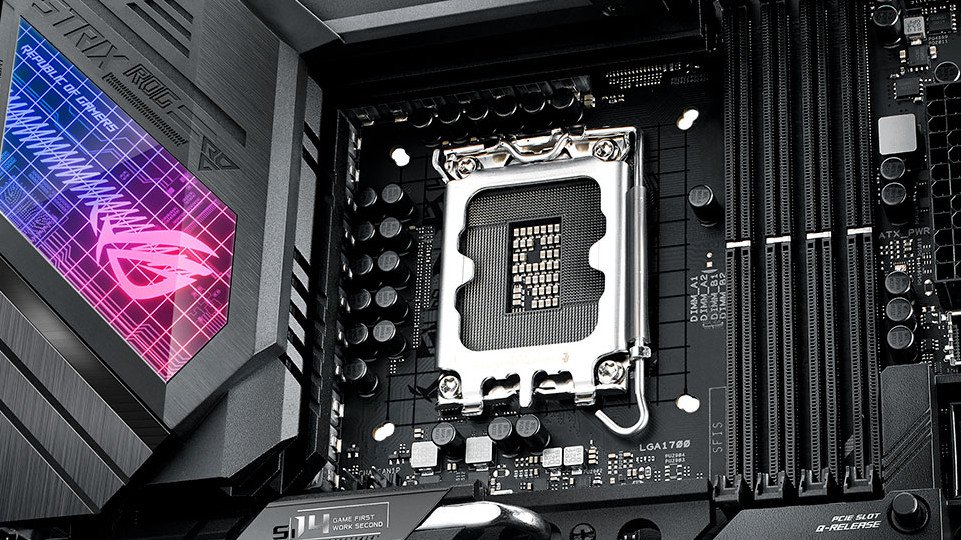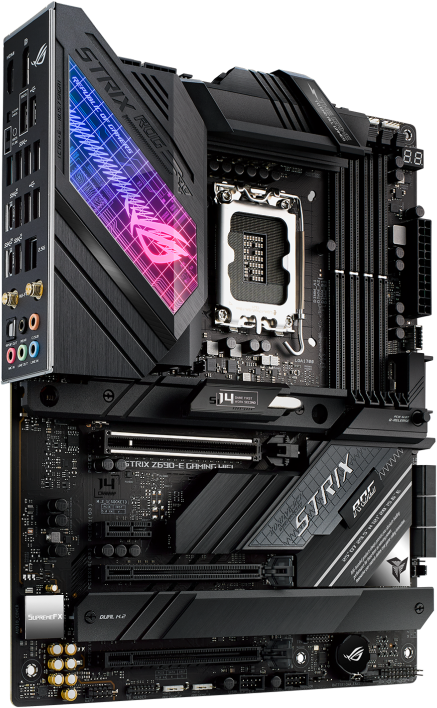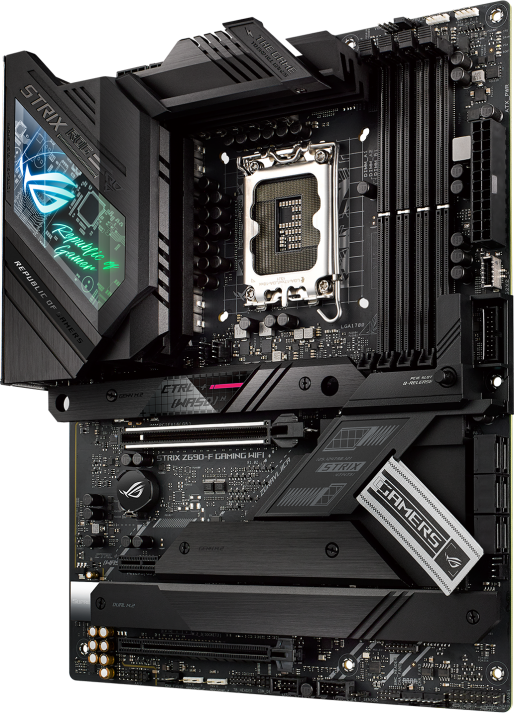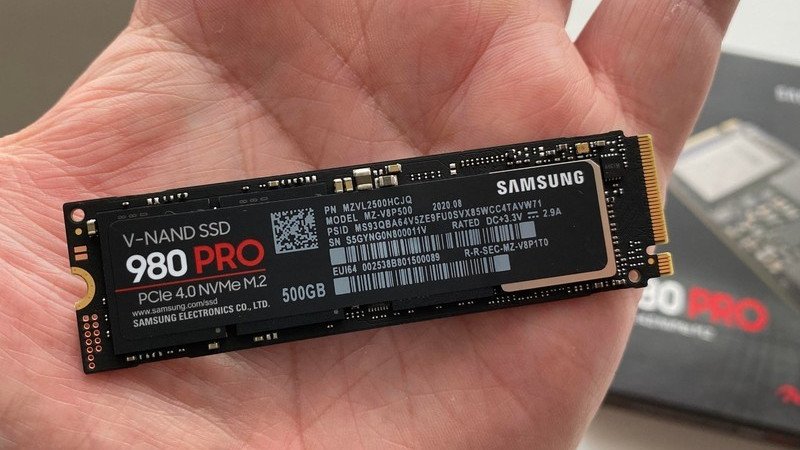ASUS Z690-E Gaming WiFi vs Z690-F: Which motherboard is better?


Storage savvy
The Z690-E is the better choice of the two without a huge jump in price but remains particularly expensive. If you're looking for plenty of high-speed storage options, the five total M.2 sockets can pair up with six SATA drives for monstrous amounts of space.
Pros
- PCIe 5.0 slot
- Up to five M.2 SSD sockets
Cons
- Expensive
- PCIe 5.0 M.2 drives halve 5.0 lane speed

Capable counterpart
As you might have expected, more expensive means better, but the Z690-F is an awesome alternative and saves some money. Offering admirable VRM and most of the features from its bigger sibling, you'd be happy with this board if you don't plan on pushing clock speeds too high.
Pros
- PCIe 5.0 slot
- Four M.2 SSD sockets
Cons
- Lower VRM
- No PCIe 4.0 slot
There are plenty of choices for Z690 chipset motherboards, and ASUS joins this range with two very similar ATX boards using the LGA 1700 socket. Comparing the ASUS Z690-E vs. Z690-F Gaming Wi-Fi shows them with closely matched features, so what's the real difference? We've broken down the specs to help you decide which motherboard is better for your next PC build.
ASUS Z690-E Gaming WiFi vs Z690-F: Specs
| Header Cell - Column 0 | Z690-E | Z690-F |
|---|---|---|
| Socket | LGA1700 | LGA1700 |
| Chipset | Z690 | Z690 |
| RAM | 4x DIMM 128GB DDR5 6400MHz max | 4x DIMM 128GB DDR5 6400MHz max |
| Graphics | 1x DisplayPort 1x HDMI | 1x DisplayPort 1x HDMI |
| Expansion | 1x PCIe 5.0 x16 1x PCIe 4.0 x16 1x PCIe 3.0 x16 1x PCIe 3.0 x1 | 1x PCIe 5.0 x16 1x PCIe 3.0 x16 1x PCIe 3.0 x1 |
| Storage | 3x M.2 (key M) 2x ROG Hyper M.2 6x SATA 6GB/s | 4x M.2 (key M) 6x SATA 6GB/s |
| Ethernet | 1x 2.5Gb | 1x 2.5Gb |
| Wireless | 2x2 Wi-Fi 6E (802.11ax) Bluetooth 5.2 | 2x2 Wi-Fi 6E (802.11ax) Bluetooth 5.2 |
| USB | Rear x12 Front header x7 | Rear x10 Front header x7 |
| Audio | ROG SupremeFX 7.1 | ROG SupremeFX 7.1 |
| Fan IO | 1x 4-pin CPU fan 1x 4-pin CPU OPT fan 1x 4-pin AIO pump 5x 4-pin chassis fan | 1x 4-pin CPU fan 1x 4-pin CPU OPT fan 1x 4-pin AIO pump 5x 4-pin chassis fan |
| Power IO | 1x 24-pin main power 2x 8-pin +12V | 1x 24-pin main power 2x 8-pin +12V |
| Power stages | 18+1 | 16+1 |
| Misc IO | 3x addressable Gen 2 headers 1x AURA RGB header 1x CPU over voltage jumper 1x front panel audio 1x SPI TPM header (14-1 pin) 1x 20-3 pin system panel header 1x thermal sensor header 1x Thunderbolt header | 3x addressable Gen 2 headers 1x AURA RGB header 1x BMC header 1x CPU over voltage jumper 1x front panel audio 1x SPI TPM header (14-1 pin) 1x 20-3 pin system panel header 1x thermal sensor header 1x Thunderbolt header |
ASUS Z690-E Gaming WiFi vs Z690-F: Storage options

At a glance, these boards seem almost identical. There's very little separating the two, and the differences will cater specifically to your needs during a build. With Wi-Fi 6E and Bluetooth 5.2 covered by both boards, what matters more is your choice of storage and PCI components. The comparison above shows the extra M.2 slots on the Z690-E, using the bundled ROG Hyper M.2 PCIe card, versus the four standard M.2 sockets on the Z690-F. It connects to PCIe x16 and provides two additional M.2 slots backed up with an extra heatsink, so anyone looking for extra storage will be over the moon.
(The Z690-E PCIe 5.0) will slow down from x16 to x8 when an SSD is in the adjacent M.2_1 socket.
The PCIe 5.0 x16 slot on the Z690-E is attractive, but ASUS points out that it will slow down from x16 to x8 when an SSD is in the adjacent M.2_1 socket if you want to use a PCIe 5.0 M.2 drive. It's not a huge problem given the abundance of choices for M.2 storage on the Z690-E, but something to bear in mind if you often jump straight into building a PC without reading the motherboard manual like me. The potential for a high-end GPU running with four M.2 SSDs at full strength is fantastic, especially with six 2.5GB/s SATA ports still available for even more solid-state drives.
The Z690-F can match the above scenario, with a GPU and four M.2 SSD connected in tandem. The downside is the removal of one PCIe, lacking the 4.0 slot seen on the Z690-E. USB options drop slightly on the Z690-F, with 10 ports on the rear instead of 12, but you only really lose two USB-A 2.0 ports, which is no big deal considering the aging tech. The Z690-E pinches the top spot for storage options and VRM, even if both boards can provide almost the same setup. The beauty is in the choice. Using the included ROG Hyper card gives you those double M.2 slots should you need them and can be neatly packed away if not.
ASUS Z690-E Gaming WiFi vs Z690-F: What about overclocking?
The Z690-E is one of the best motherboards available for good reason, given the 18+1 power phase delivery provides better VRM than its Z690-F counterpart. For a board that can handle the top-end 12th Gen Intel processors like the Core i9-12900K combined with super-fast DDR5 RAM, it's comforting to know you can push its limits without worrying about a meltdown.
Both motherboards include identical headers for liquid cooling and chassis fans, so your options for cooling are plentiful. The Z690-F offers 16+1 power stages, which is nothing to sniff at, but considering the relatively small difference in price, I would aim towards the Z690-E just for increased peace of mind during overclocking. The extra storage options and additional USB ports provide enough incentive for the Z690-E, but the Z690-F offers a slightly cheaper alternative for anyone who would rather avoid overclocking altogether.
All the latest news, reviews, and guides for Windows and Xbox diehards.

Ben is a Senior Editor at Windows Central, covering everything related to technology hardware and software. He regularly goes hands-on with the latest Windows laptops, components inside custom gaming desktops, and any accessory compatible with PC and Xbox. His lifelong obsession with dismantling gadgets to see how they work led him to pursue a career in tech-centric journalism after a decade of experience in electronics retail and tech support.
